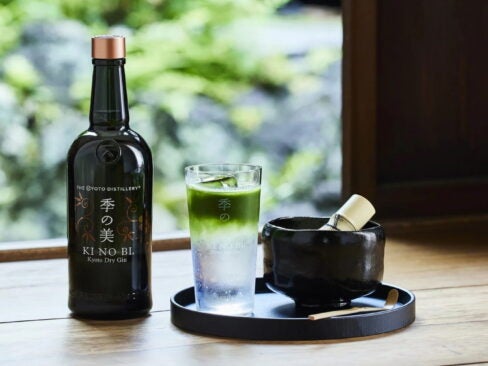The closure of restaurants and bars over the past year, and the growth of e-commerce and home-drinking, has seen wine consumption trends upended globally – both in terms of the amount drunk, but also its quality. How these trends have played out in any given country varies according to the strictness of national lockdowns, the degree of reliance on tourism, and pre-existing national differences in taste. Analysis of new data from the OIV shows which countries have the most expensive taste when it comes to wine imports with the USA behind only Japan.
By dividing the amount each country spent on wine imports by the volume imported, the average price per liter can be calculated. Globally, 10.6 billion liters of wine were imported in 2020, costing €29.6bn ($35.9bn) in total, which works out as €2.80 ($3.41) a liter. This average skews downwards, as it includes wine shipped in bulk, which tends to be cheaper than bottled. Imported bottled wine averaged €3.70 ($4.50) a liter, and sparkling wine €5.91 ($7.91).
[See also: How Tequila Went From Nightclub Shot to Premium Spirit]
Which countries buy the most expensive wine?
Among the world’s biggest wine importers, Japan has the most expensive taste, mostly led by its demand for sparkling wine: it imported 36.4 million liters of the stuff in 2020, at an average of €13.13 ($15.97) a liter. Overall Japan averaged €5.25 ($6.39) a liter for all types of wine. The US followed closely behind and actually leads in the amount paid for bottled imported wine.
While the UK is the world’s biggest wine importer, importing 1.46 billion liters in 2020, across the board the country pays below average, with a liter of bottled wine costing on average €3.35 ($4.07).
France, Portugal and Germany trail behind the global average, because of the quantities of bulk wine imported. In Germany, over half of wine imported was in bulk, but it made up just a fifth of the value imported.
In France, bulk wine was a third of the value imported, but over three-quarters of the quantity. France, despite being the most famous wine country in the world, is not one of the leading importers, choosing instead to drink domestically-produced wine. Two-thirds of wine produced in France is sold and drunk in the country.
Where does the US import its wine from and how much does it pay?
Delving deeper into imports, using data from ComTrade, we can see huge gaps between the amount the US pays for wine from different parts of the world.
Unsurprisingly, French wine tops the list, with the US paying $8.76 a liter for bottled wine, and over $20 per liter of champagne and other sparkling wine. On the other end of the spectrum is bottled wine from Chile and Australia, for which it pays less than $3.50 a liter.
How did the Covid-19 pandemic change wine imports in 2020?
The pandemic has caused shifts in these habits, as the closure of restaurants and hotels shut down a large market for wine at a higher price point. Instead people shifted to supermarkets and e-commerce for their home drinking.
Globally, less bottled wine was imported in 2020, and it was cheaper. In particular, the US, France and Japan followed this trend. France saw a 14% reduction in the volume of bottled wine imported, and the US a 9.3% reduction in the value of wine imported, though only a 3% reduction in volume.
A few countries including China, Belgium and Sweden saw a decrease in the volume of bottled wine imported, but actually an increase in value. In the UK and the Netherlands, value decreased but volume increased.
“The most widely observed feature of the pandemic was the growth in off-trade sales and the coming of age of the e-commerce sector, as lockdowns and social distancing measures forced through switches from on-premise to home consumption,” says IWSR Drinks Market Analysis analyst Dan Mettyear.
Mettyear says that the markets that were already oriented to home consumption may see a value increase, with wealthier people choosing to trade up on the wine they purchase in place of their restaurant and bar consumption.
He said: “But in on-trade oriented markets like Spain or Portugal for example, the shift to home consumption represented a major value decline, as the on trade is the principal channel for premium products and a much higher value space than the retail sector.”
[See also: Why It’s Still Not Too Late to Invest in Scotch Whisky]
Will the wine market recover after Covid-19?
Some of these trends predate the past year. In the US there have been 30 years of real-value decline in the amount spent on imported wine.
Despite the fact that $5 in 1991 is worth almost $10 in 2020 due to inflation – a 92% increase – the amount spent per liter of bottled wine has only grown by 59% to just under $6. The amount spent per liter of sparkling wine, after peaking at around $14 in 2007, has since dropped, and is now only 8.7% above the amount paid in 1991.
But despite the numbers in the US, Mettyear says the overarching trend over the past few years is one of higher value and quality wine, and one which he believes will return post-pandemic.
“The pandemic is a major disruptor, and an ‘artificial’ one at that, which has ultimately upended this trend,” says Mettyear. “Beyond the broader recovery period, however, we expect long term trends in wine to resume with premiumization driving value growth on a backdrop of stable to declining consumption levels.”










